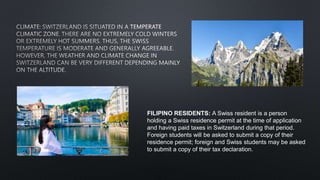Western Europe has a population of about 196 million, with many countries being part of NATO and the EU. This region is notable for its rich cultural heritage, including famous artists, orchestras, and popular fashion brands, along with distinct national symbols and traditions in countries like Austria, Belgium, France, and Germany. The document also details the estimated Filipino populations in various Western European countries and highlights aspects such as religion, cuisine, and national holidays.
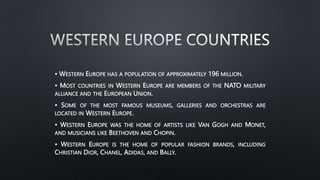



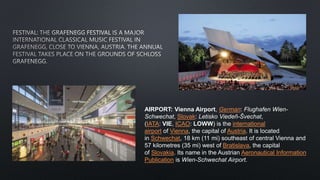












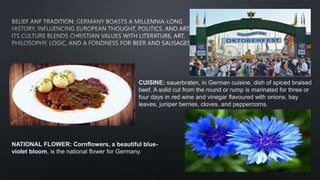



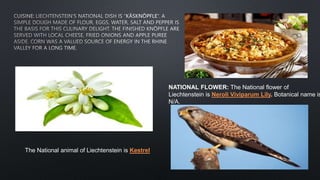


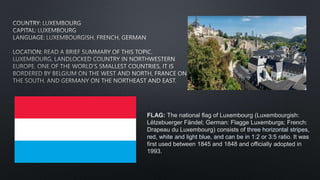






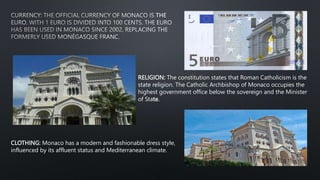
![AIRPORT: Monaco has no airport, but has Monaco
Heliport in the district of Fontvieille. The nearest major
airport is Nice Côte d'Azur Airport in France.
MAIN PORT: Port Hercules (French: Port Hercule [pɔʁ ɛʁkyl])
is the only deep-water port in Monaco. The port has been in
use since ancient times. The modern port was completed in
1926, and underwent substantial improvements in the 1970s.](https://image.slidesharecdn.com/western-europe-240422152731-b3e52038/85/Western-Europe-CountriesPowerPoint-Presentation-33-320.jpg)
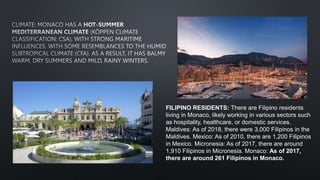
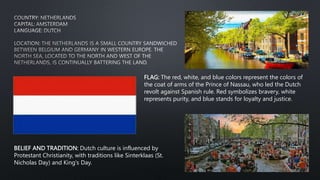


![AIRPORT: Amsterdam Airport Schiphol (IATA: AMS,
ICAO: EHAM), known informally as Schiphol Airport
(Dutch: Luchthaven Schiphol, pronounced [ˌlʏxtɦaːvə(n)
ˈsxɪpˈɦɔl(ɦ)ɔl; sxɪpˈɦɔl]), is the main international airport of
the Netherlands.
MAIN PORT: The Port of Rotterdam is the largest seaport in
Europe, and the world's largest seaport outside of East Asia,
located in and near the city of Rotterdam, in the province of
South Holland in the Netherlands. From 1962 until 2004, it
was the world's busiest port by annual cargo tonnage.](https://image.slidesharecdn.com/western-europe-240422152731-b3e52038/85/Western-Europe-CountriesPowerPoint-Presentation-38-320.jpg)





